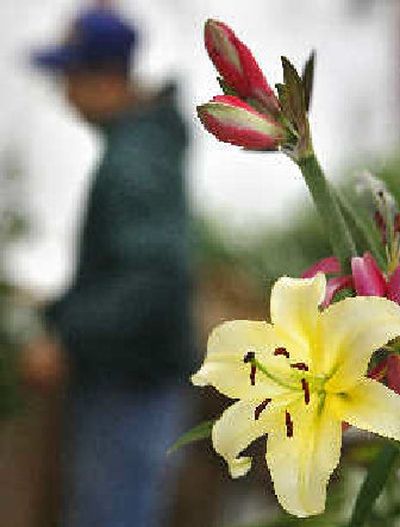Seeds of hope

WATSONVILLE, Calif. — Along a fog-blanketed swath of coastline waiting to burst forth with vivid colors, there are signs of the yesterdays, todays and tomorrows of the flower industry.
Empty greenhouses flank Josh Dautoff’s farm, relics of the bust that came when cheap imports drove his neighbors out of business. Tiny yellow bulbinellas, tropical red-and-white amaryllis and more than 150 other varieties replace the daisies his parents grew in the simpler days of floral farming, when a family could make a living with one flower. A barren six-acre plot will soon hold the seeds of a future crop of organic sunflowers.
“People come to us looking for something different,” said Dautoff, 29. “No one’s coming to me now asking for organic flowers. But I have faith that they will.”
Farmers who weathered a wave of cheap imports in the last decade by coaxing their fields to yield hundreds of harder-to-find varieties are increasingly betting on organic flowers, a nascent industry that is taking bloom on the heels of the organic food boom.
Though the market for organic flowers is still small — sales totaled $8 million in 2003, a fraction of the $19.4 billion consumers spent on all flowers nationally — it’s growing fast as consumers wary of chemicals start looking for the same standard in other products such as soaps, clothing, cosmetics — and Valentine’s Day bouquets.
There’s no evidence that organic flowers are healthier, but consumers are increasingly willing to pay more for products made without chemicals harmful to workers or the environment.
Organic flower sales are expected to grow 13 percent annually through 2008, according to the Organic Trade Association.
Many in the industry hope the decision to go organic will eventually be an environmentally friendly but also a financially sound alternative for farmers trying to stay afloat, just as finding interesting new flowers, colors and shapes helped them survive when foreign competition was crushing local production in the 1990s.
In spite of its promise, the organic market is still limited, and the financial risks are substantial, which makes it hard for Dautoff, who wishes his whole farm could be chemical free.
To halt the chemical cycle, farmers need to leave fields fallow for three years for pesticides to wash from soils. They also need to encourage beneficial insects to protect against destructive ones and rotate crops.
Also, the wholesale buyers who make up the bulk of the mainstream flower market still don’t want organic, said Darrell Torchio, who has run a flower wholesale business in San Francisco for 26 years.
But there are signs that this might be changing, said Gerald Prolman, who started Organic Bouquet, the first national online distributor of organic flowers, in 2001.
“This is a matter of supply and choice, rather than supply and demand,” he said. “The more we make it available, the more people ask for it.”